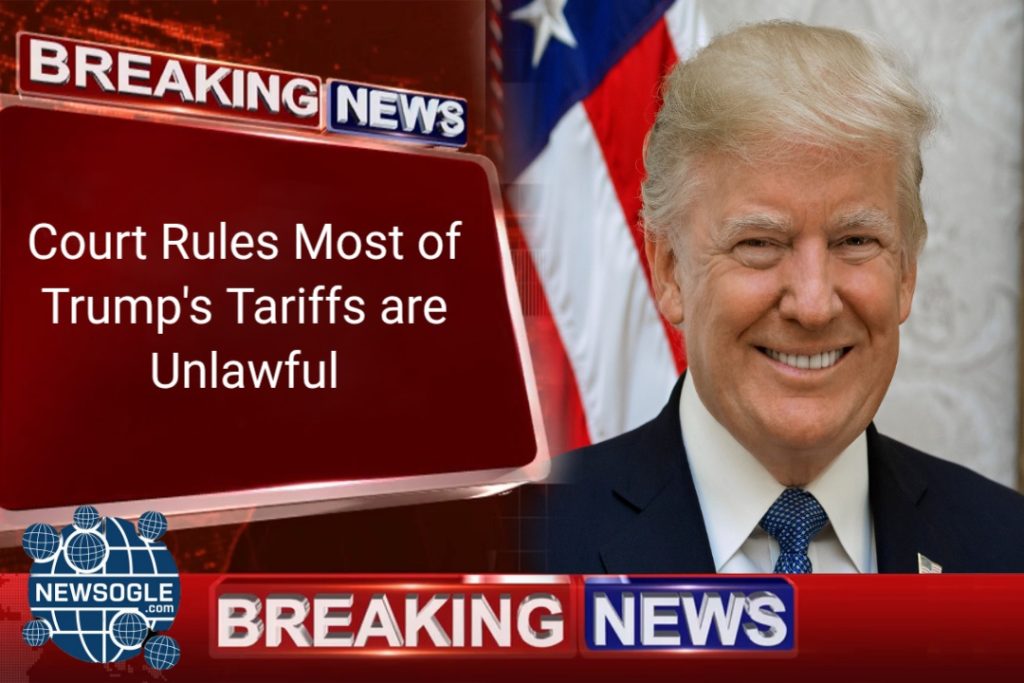
In a landmark decision on Friday, August 29, 2025, a federal appeals court upheld an earlier ruling from the Court of International Trade, deciding that most of the tariffs imposed during Donald Trump’s administration were implemented unlawfully. The ruling, while not banning tariffs as a trade remedy per se, concluded that Trump’s method of imposing tariffs—using the 1977 International Emergency Economic Powers Act (IEEPA) to unilaterally declare an economic emergency and set tariff rates without congressional approval—violated federal law.
This momentous judgment signals major legal and political challenges to Trump’s ambitious efforts to overhaul U.S. trade policy and has profound implications for the country’s economic diplomacy, global markets, and domestic lawmaking process.
This detailed two-thousand-word report comprehensively explores the court ruling, its legal reasoning, wider ramifications domestically and internationally, economic expert perspectives, and the future trajectory of U.S. trade policy.
Context: Trump’s Tariff Strategy and Legal Basis
During his presidency, Trump adopted a forceful protectionist stance aimed at reshaping international trade relations to favor American manufacturing and reduce trade deficits. A centerpiece tactic was imposing tariffs on hundreds of billions in imports from major trading partners, including China, the European Union, Mexico, Japan, Canada, and others.
To justify his tariff impositions, Trump invoked the International Emergency Economic Powers Act (IEEPA) of 1977. This law grants the president power to regulate commerce during a declared national emergency that threatens the U.S. economy or national security. Trump declared successive “economic emergencies” to impose tariffs on imported steel, aluminum, solar panels, and more.
However, critics and courts have challenged this approach, arguing that while the president has authority under IEEPA to regulate commerce, unilaterally setting and escalating broad tariffs without congressional approval oversteps the balance of power established by the U.S. Constitution and trade laws.
The Court’s Ruling: Key Points and Legal Reasoning
The federal appeals court ruling, consistent with its previous decision, articulated several fundamental points:
- Legality of Tariffs Not Denied: The court emphasized it was not ruling against tariffs themselves but challenged the procedure and authority by which they were imposed.
- IEEPA Abuse: It found that Trump’s use of IEEPA to declare a broad “economic emergency” and impose tariffs without engaging Congress violated the statute’s limits.
- Congressional Role: Trade policy traditionally requires coordination with Congress through acts like the Trade Expansion Act of 1962 and the Trade Act of 1974, which provide more specific and restrained frameworks for imposing tariffs.
- Separation of Powers: The ruling underscored that the unilateral executive action circumvented Congress’s constitutional authority to regulate commerce and trade.
- Implications for Current Tariffs: While the decision does not automatically remove tariffs, it opens the door for legal challenges and revokes unilateral presidential power over tariff-setting in emergencies without legislative action.
Reactions and Commentary: Ford Foundation To Nobel Laureate
The ruling has been met with a mixture of legal acclaim and political controversy.
Paul Krugman, Nobel Prize-winning economist, posted on his New York Times blog:
“One crucial thing to understand is that Trump is facing a completely self-inflicted disaster here. He probably could have gotten Republicans in Congress to vote for insane trade policy. But he was impatient, and wanted to start ruling as a dictator right away.”
Krugman criticized the haste and disregard for democratic processes and predicted serious ramifications for Trump’s trade agenda.
Congressional Democrats applaud the ruling as a victory for constitutional governance and international norms. Many Republican lawmakers are split; some privately agree with the legal reasoning but regret the disruption to Trump’s protectionist legacy, while Trump himself condemned the ruling as a partisan assault and vowed to pursue alternative avenues.
Why It Matters: The Trade Policy Landscape and Future Prospects
This ruling comes at a delicate juncture:
- Trump aimed to disrupt decades of U.S. trade policy rooted in multilateralism and negotiated treaties by aggressive unilateral tariff impositions.
- His tariffs rattled global markets, strained alliance ties, fueled fears of inflation through higher consumer prices, and slowed U.S. import-reliant sectors.
- Trump hailed tariffs as a way to pressure economic concessions, especially from China, the EU, and Japan, while declaring that tariff revenues helped offset tax cuts.
- The legal check limits presidential agility in declaring trade emergencies and forces Congress-centric trade policymaking.
- Alternative legal tools, like sections of the 1974 Trade Act, exist but offer narrower powers and require more procedural safeguards.
- Global allies and adversaries closely watch the ruling as it reasserts the importance of rule-based trade governance.
Economic and Market Implications: Stability, Inflation, and Global Commerce
Markets reacted swiftly to the ruling announcement:
- Initial financial market volatility reflected uncertainty about the possible rollback of tariffs and its impact on key industries.
- Importers and multinational corporations anticipate greater legislative involvement and predictable regulatory processes.
- U.S. manufacturers wary of losing protectionist advantages pressed for swift congressional action to preserve some tariff benefits.
- Inflationary pressures might ease if tariffs are moderated, benefiting consumers but complicating political messaging.
- Global trading partners welcomed the ruling, hoping it signals a return to cooperation and trade predictability.
The Political Strategy Behind Tariffs and the Court Checks
Trump’s impatience for rapid unilateral action, bypassing Congress, reflects his often combative governance style aiming for immediate impact. Experts suggest:
- If Trump had sought bipartisan congressional support initially, he might have secured trade laws endorsing his goals, albeit with compromise.
- The court ruling emphasizes that Presidential powers are limited, and true trade reform demands legislative consensus.
- This ruling may influence ongoing and future presidencies to approach trade policy with balanced institutional respect and deliberation.
- The decision encourages Congress to reclaim its central role in trade and economic policy formulation after years of executive overreach.
Historical and Constitutional Context: Trade Regulation and Executive Power
The U.S. Constitution grants Congress extensive powers over commerce and tariffs, reserving to the executive a more circumscribed role. Historically:
- Congress passed acts like the Smoot-Hawley Tariff Act, the Trade Act of 1974, and NAFTA enabling trade regulation and treaty ratification.
- The IEEPA was originally designed for national security emergencies but was expanded for economic crises.
- Courts have expressed caution in allowing broad executive powers in peacetime trade policies without congressional input.
- This ruling reinforces precedent limiting executive aggrandizement to safeguard checks and balances.
International Perspective: Effects on Global Trade and Geopolitics
The ruling re-energizes multilateralism advocates worried about explosive tariff wars and unpredictable trade restrictions undermining globalization.
- The World Trade Organization (WTO) and allied countries welcomed a constructive legal framework supporting negotiated resolutions over unilateral measures.
- Countries impacted by Trump’s tariffs, including the EU, Japan, Canada, Brazil, and India, expect fairer treatment via formal dispute resolution.
- Geopolitical tensions, especially the U.S.-China trade rivalry, may realign toward diplomacy and structured agreements over coercive tariffs.
What Could Happen Next?
The ruling does not instantly rescind tariffs; it opens a legal and political process that could unfold in several ways:
- Congressional Action: Lawmakers could craft new tariffs legislation providing a clearer mandate balancing protectionism with trade obligations.
- Legal Challenges: Importers and foreign governments may file lawsuits demanding tariff removal or compensation under the court’s reasoning.
- Executive Adaptation: Future administrations must navigate narrower legal pathways for imposing trade sanctions or restrictions.
- Political Debate: Trade policy will remain a flashpoint in electoral politics, especially in swing states affected by manufacturing and agriculture.
Conclusion: A Defining Moment in Trade Governance and Democratic Balance
The August 2025 federal appeals court ruling on Trump’s tariffs marks a historic affirmation of legal limits on executive authority in U.S. trade policy. It underscores the importance of congressional involvement and adherence to constitutional principles in regulating one of the most powerful levers of economic policy.
While tariffs themselves remain a tool of economic statecraft, their imposition must respect legal frameworks preventing unilateral excess and ensuring accountability. This decision poses a serious challenge to Trump’s protectionist legacy, signals a return to institutional balance, and reshapes the future of U.S. engagement in global trade.
SEO Keywords Summary
Trump tariffs unlawful ruling, Federal court limits Trump executive tariff power, IEEPA trade limitations, US tariff policy legal challenge, Federal appeals court trade ruling 2025, Paul Krugman Trump tariffs critique, US trade Congress powers, WTO trade disputes Trump tariffs, US China trade war 2025, global tariff wars and US policy
This detailed, nuanced post provides a thorough understanding of the legal, economic, and political dynamics surrounding the landmark federal court ruling on Trump’s tariffs in August 2025, catering to policymakers, economists, business leaders, academics, and global readers interested in trade and economic governance.






